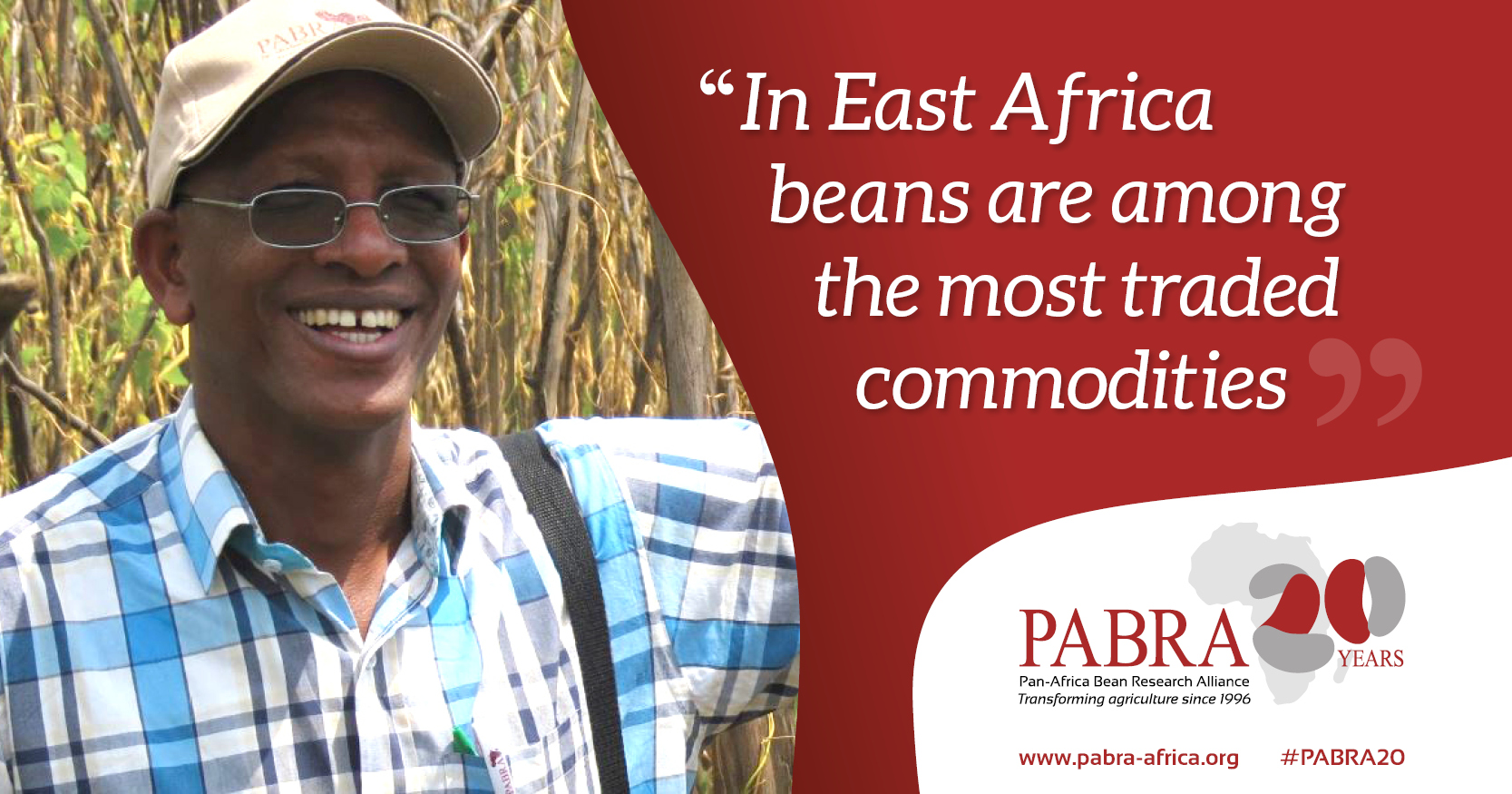By Dr. Jean-Claude Rubyogo, Seed Systems Specialist and East and Central Africa Bean Research Network (ECABREN) Coordinator
There was a time when, as researchers, our focus was on breeding beans to have varieties resilient to challenges like soil fertility, or disease and pest tolerant. These improved beans would be released to farmers, and we would go back into the lab, to breed more beans capable of beating more challenges.
But this is not the case anymore.
Today, this is where much of our research starts. If we are to call our work a success, we need to learn a lot more about what happens to those beans after they are released.
Since PABRA began 20 years ago, we have released over 500 new, improved beans and reached more than 27 million bean farmers. It’s an impressive figure but we need to reach a lot more people.
From the two decades of PABRA work, one thing is clear: partnerships mean progress. By linking scientists with private businesses including small and medium enterprises; companies with government agencies, impact is achieved.
Let’s take the story of the white pea bean in Ethiopia as an example.
The company Agricultural Commodity Supplies (ACOS), identified growing demand for “baked beans,” as they are known in Europe. But they were in short supply. So, they asked the Ethiopian Institute of Agricultural Research (EIAR) for help.
Through a PABRA partnership, EIAR and CIAT bred higher-yielding beans, that were more resilient to local pests, diseases and drought. EIAR, CIAT and seed value chains actors designed an impact oriented seed systems to access these varieties to millions of farmers in Ethiopia.
Between 2004 and 2016, the adoption of the white pea bean varieties jumped from less than 10 to 70 percent. Now more than 2 million small holders are growing white pea beans. Production of the bean, now called “white gold”, has quadrupled: where before farmers were harvesting 0.75 tons of beans per hectare, now they are harvesting 1.6 tons per hectare.
Export volume has increased 15-fold, from US$8 million to US$120 million. The price of white pea beans has increased from US$200 to US$600 per ton.
The lesson is clear: when we know what consumers want, we can connect buyers with producers, and producers with improved varieties. It excites me to see small-scale armers and entrepreneurs earning a better living as a result of beans.
In East Africa beans are among the most traded commodity. That translates to millions of dollars going to farmers – particularly women who make up the majority of bean farmers.
But we need to invest in more production, better distribution and more educated consumption of nutritious foods. We need investors and policy makers to see beans for what they are: a cash crop, like coffee, tea and cotton – which can put more food on the table, and more money in people’s pockets.

